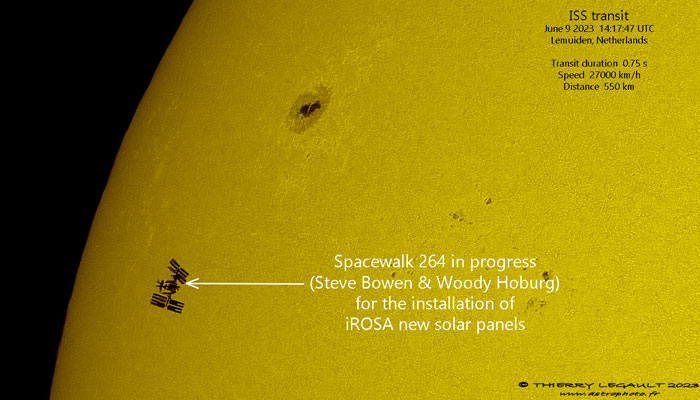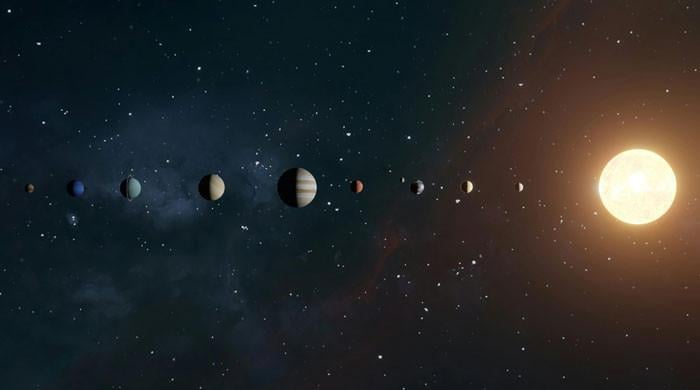WATCH: Astronauts take epic pics of ISS casting shadow on Sun spots
Images were captured by a French astrophotographer, by travelling six hours with his 220-pound telescope
June 15, 2023

A spectacular view was captured by astronauts while on a spacewalk as they seized the moment and clicked snaps of the International Space Station (ISS) while it was crossing the sun.
The shadow was cast on three sets of solar spots — which are so big that they can swallow two Earths at one time.
Two Nasa astronauts Stephen Bowen and Warren "Woody" Hoburg exited the ISS to install a new solar array.
The image was captured on June 9 by Thierry Legault, a French astrophotographer, who travelled six hours with his 220-pound telescope to save the images of the international space outpost.
"The transit lasts less than one second," he told Insider, adding that he was lucky to snap the pictures as "45 minutes later a big cloud hides the sun."
The ISS completes its orbit around Earth in just 90 minutes and only spends 0.75 seconds travelling in front of the sun. For pictures like these, the most accomplished astrophotographers are required for this job.
A brief clip shows the ISS is seen crossing three sets of sunspots, which is, in itself, pretty rare.
Solar spots are the places where Sun’s magnetic fields are not stable, triggering flares — giant explosions that send energy and high-speed particles into space.
These solar flares have been previously thought to cause radio blackouts on Earth as well as responsible for creating stunning auroras or Northern lights.
According to Nasa, charged particles from solar flares can also pose some radiation risk to astronauts, especially if they are outside of the ISS on a spacewalk.
Therefore, astronauts keep a close eye on the flares lest they suffer any damage or injury.
The activity of the sun is on the rise as it is reaching its decadal peak of activity.
The ISS orbits our planet about 250 miles above the ground, while the sun is 93 million miles of distance.











